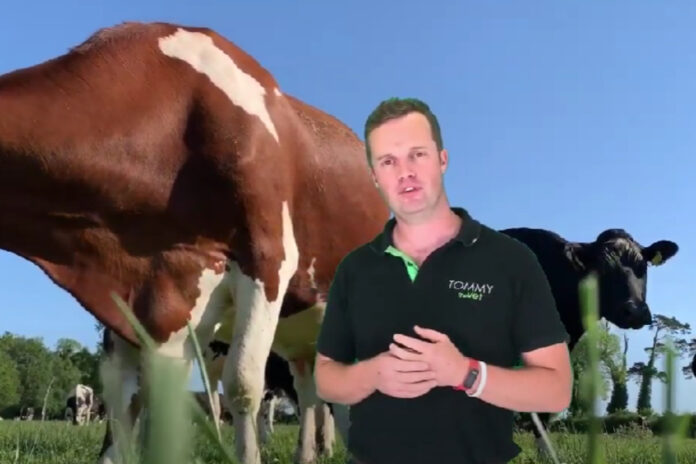That’s Farming editor, Catherina Cunnane, summarises some of the main messages conveyed by veterinary consultant, Tommy the Vet, during a webinar on the role of habitats and behaviour in calf rearing, hosted by Interchem, on Thursday, January 19th, 2023.
- Being brilliant at the basics: Colostrum, feeding, hygiene, fresh air, calf comfort and space are the cornerstones of successful calf rearing;
- What is good for the calf is good for everybody;
- Identify stress gaps on your farm and address them appropriately;
- More dairy farmers are going to be rearing their own calves to at least up to 12 weeks of age – have facilities, adequate skills, and resources;
- Vets have a “key” role in calf-rearing systems – advice, expertise, guidance and support;
- Do simple things well over time – about creating habitats to achieve goals/objectives/aims;
- Long-term benefits of having a good system and good habitats;
- Attention to detail is the “key” to progress in successfully rearing calves;
- Identify bottlenecks (weak links) on your farm to reduce stress, improve calf health, ect;
- Complete a checklist on calf health – Tommy the Vet has a one-page template available for adaption for use that covers 15 different areas – Have a process that is comprehensive, quick and repeatable. You can work with your vet/farm advisor to complete this. Allows a systematic approach to calf investigations;
- Small changes over time accumulate;
- Change: What can we change on the farm in a year? Does someone want to change? How can you make tasks easier? Could you add a hygiene station, for example?
- Cue, routine and reward for all habitats – in calf rearing, it could be fewer sick calves, saving time, fewer scour incidents;
- Hygiene is a major area;
- Follow colostrum 1-2-3 rule;
- Think of the calf’s gut like a sponge soaking up anti-bodies;
- Clean colostrum paramount – look at hygiene at milking, harvesting method and measuring quality on-farm using a Brix refractometer;
- Water is often ignored, but it is a source of high-quality fibre;
- Attention to detail and consistency at feeding are key;
- Avoid overcrowding at feeders – position and calibrate correctly;
- Follow a calf-rearing cleaning protocol, such as this one – Aim: simple but effective;
- Reduce infection pressure – 50% of calf diseases are related to hygiene;
- Fresh air: Can be seen as an afterthought, but it is the future potential lifetime performance. Fresh air has ozone which is nature’s ‘free’ disinfectant. Fresh air keeps straw dry and reduces the disease burden;
- Remember that a calf’s needs change overtime with age, weather and among seasons;
- Calves lie down for 80% of their day;
- Calf housing: Think about the position, space per calf, drainage, air flow/ventilation, cleaning and feeding protocols (your daily routine);
- Comfortable calves mean healthier calves;
- Consider the role of straw and calf jackets on your enterprise;
- Straw “an incredibly hard to beat insulator that solves a lot of problems” – Correct nesting score, which we explored in this article on That’s Farming, important;
- Look at colostrum management, feeding, transport, hygiene, space, airflow, and calf comfort.
Previous articles on That’s Farming:
- ‘We see hopper balls being hung up for calves to play with in pens’ – vet
- People the ‘biggest’ factor driving calf health – Tommy the Vet
- ‘I have seen woodchip, peat and different things being used, but nothing beats straw’ – vet
The purpose of this article is to inform readers. Always seek your vet’s advice/expertise/opinion.





